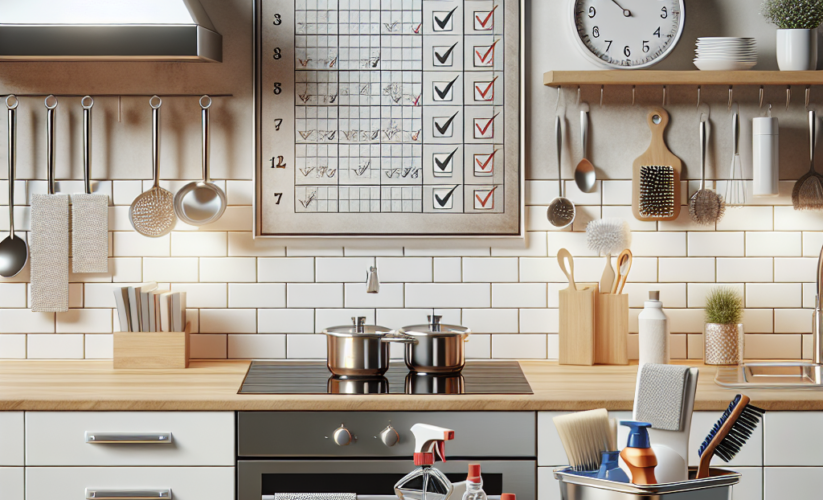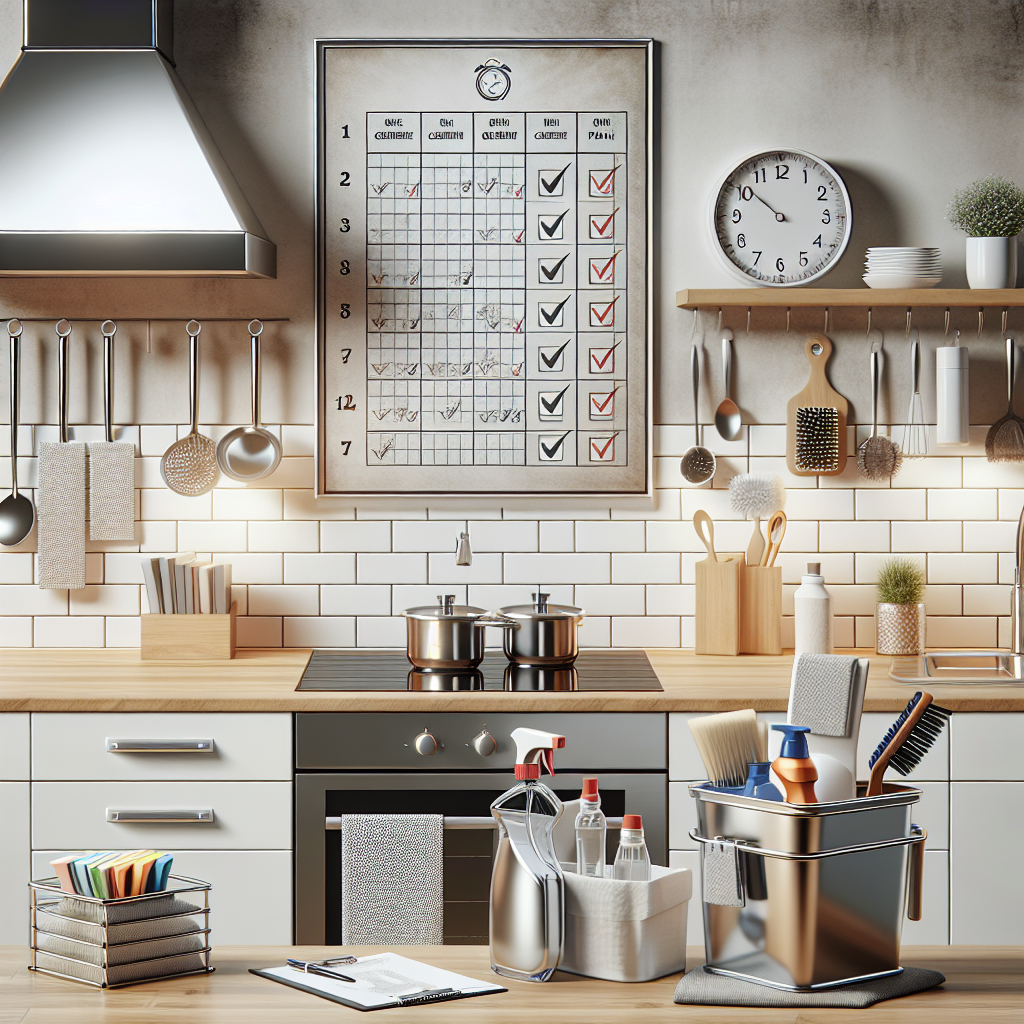
Unlock the Ultimate Putzplan: 7 Proven Steps for Sparkling Results!
All You Need to Know About Putzplan
Understanding Putzplan Fundamentals
The term **Putzplan** refers to a detailed cleaning schedule that outlines the tasks required to maintain cleanliness in residential or commercial spaces. This plan is crucial for effective time management and ensuring that cleaning tasks are completed consistently. A well-structured Putzplan helps individuals, families, or companies keep their environments tidy without feeling overwhelmed. By breaking down the cleaning process into manageable sections, the Putzplan encompasses daily, weekly, and monthly tasks that contribute to a well-kept space.
The Importance of a Cleaning Schedule
Creating a cleaning schedule like a Putzplan is essential for several reasons. Firstly, it promotes consistency, ensuring that no areas are neglected over time. For example, a weekly bathroom cleaning task ensures cleanliness and reduces the development of mold and mildew. Secondly, having a cleaning plan helps prioritize tasks, making sure that the most critical areas receive attention when necessary. A Putzplan effectively distributes the workload, making it easier for households or facilities managers to maintain established standards of cleanliness.
Components of a Putzplan
A comprehensive Putzplan includes several components that detail specific cleaning tasks, frequency, and responsible parties. Common tasks can include vacuuming, dusting, mopping floors, and sanitizing surfaces. It’s beneficial to use a checklist format for clarity. For instance, a monthly Putzplan might include tasks such as deep cleaning carpets and polishing furniture. Visual aids like checklists can enhance your Putzplan’s usability. Consider incorporating charts and schedules which can make the plan more engaging and easier to follow.

How to Create an Effective Putzplan
Developing an effective Putzplan requires careful consideration of the space being cleaned and the needs of its users. Start by assessing the area to determine the frequency of cleaning required. For example, high-traffic areas may need daily attention, while less-used spaces could be cleaned weekly or monthly. The next step is to list all cleaning tasks related to each area; including everything from dusting surfaces to organizing clutter. This comprehensive task list will serve as the foundation for your Putzplan.
Setting Realistic Goals
When creating a **Putzplan**, it is crucial to set realistic goals for what can be achieved within a specific timeframe. Consider dividing tasks among family members or coworkers to ensure workload balance. For instance, assigning each person a role, such as kitchen cleaning or bathroom sanitation, can create accountability and efficiency. It can also be helpful to incorporate time estimates for each task, making it easier to evaluate how to fit the Putzplan into daily routines.
Leveraging Technology to Enhance Your Putzplan
Modern technology can significantly enhance a traditional Putzplan. There are various apps and scheduling software available that can help in managing cleaning tasks efficiently. These tools often include scheduling features, automatic reminders, and even group sharing options for collaborative cleaning spaces. For instance, sharing an online Putzplan with your family or colleagues can ensure everyone is on the same page and can visualize their responsibilities clearly. Therefore, utilizing technology not only aids organization but can also turn cleaning into a more engaging task.

Tips for Maintaining Your Putzplan
Once a Putzplan is in place, maintaining its efficacy becomes the next priority. Consistency is key; encouraging all involved parties to stick to their assigned tasks helps foster a team environment. Regularly reviewing the Putzplan can pinpoint areas that need adjustment or improvement. If certain tasks consistently go unfinished, consider revising the frequency or breaking them down into smaller, more manageable segments. Adaptability is essential to ensure the plan continues to work as effectively as possible.
Incorporating Feedback and Adjustments
Soliciting feedback from all parties involved can significantly enhance a Putzplan’s effectiveness. After a month of implementation, gather insights on what is working well and what is not. This could involve conversations about task satisfaction, efficiency, or potential changes to the cleaning schedule. By involving everyone in the process, you can inspire a sense of ownership and motivate individuals to participate actively in the cleaning process. Additionally, be open to making adjustments; this flexibility ensures the Putzplan remains relevant to the cleaning needs of the group.
Celebrating Achievements
Lastly, don’t forget to celebrate milestones and achievements. Recognizing when tasks are completed as per the Putzplan can boost morale and encourage continued participation. Whether it’s a team dinner after a month of consistently followed tasks or simple acknowledgments of individual efforts, these gestures create a positive cleaning culture. This acknowledgment can pave the way for greater cooperation in maintaining a clean environment.

Key Takeaways
- A Putzplan is a structured cleaning schedule that promotes consistency and time management.
- Identifying cleaning priorities and appropriate frequencies can optimize your Putzplan.
- Incorporate technology to maintain and share your Putzplan effectively.
- Encourage feedback for continuous improvement of your cleaning schedule.
- Celebrate milestones to foster a positive cleaning culture and encourage participation.
FAQ
1. What is the best way to start creating a Putzplan?
Start by assessing the cleaning needs of your space. List all areas that require attention and categorize tasks by frequency, such as daily, weekly, and monthly. Involve family or team members in this process to ensure responsibilities are shared effectively.
2. Can I use a Putzplan for both home and office cleaning?
Absolutely! A Putzplan is versatile and can be tailored for any setting. Just adjust the cleaning tasks based on the unique needs of your home or office environment to maximize efficiency.
3. What tools are useful for maintaining a Putzplan?
Consider using digital tools like cleaning apps or shared calendars. They can help schedule tasks, send reminders, and track progress among team members, making maintaining your Putzplan seamless.
4. How often should I review and update my Putzplan?
It’s advisable to review your Putzplan at least monthly. This allows you to make necessary adjustments based on feedback and changes in cleaning needs. Frequent evaluations can enhance the overall effectiveness of your plan.
5. What happens if someone does not follow their assigned tasks?
Open communication is key. Discuss any concerns regarding task completion with the individual. This dialogue can lead to identifying challenges they may face, and you can adjust responsibilities or provide help where necessary.